Wednesday, September 24, 2025. Annette’s Roundup for Democracy.
Kamala Harris' book, "107 Days," came out yesterday. So did her endorsement of Zohran Mamdani for New York’s Mayor.
Harris on endorsing Mamdani for NYC mayor: "I support the Democrat in the race, sure"

Former Vice President Kamala Harris said Monday night she's backing progressive Zohran Mamdani in the New York City mayoral race during her first live interview since leaving office.
The big picture: Harris' lukewarm endorsement of Mamdani was part of a wide-ranging interview on MSNBC's "Maddow" that saw her label President Trump a "tyrant," express regret for not doing more to challenge former President Biden about running in 2024 and hail the return of Jimmy Kimmel's show.
What she's saying:
On Mamdani: "As far as I'm concerned, he's the Democratic nominee and he should be supported," Harris said.
When MSNBC's Rachel Maddow asked Harris whether she endorsed his candidacy, Harris replied: "I support the Democrat in the race, sure. But let me just say this: He's not the only star."
Harris went on to say that she knows he's in New York and "New Yorkers think they're the center of the world," but she pointed to fellow Democratic mayoral candidates Barbara Drummond in Mobile, Alabama, and Helena Moreno in New Orleans, whom she described as "stars."
On Trump, Harris said: "We used to compare the strength of our democracy to communist dictators. That's what we're dealing with right now in Donald Trump. And these titans of industry are not speaking up."
She added that at some point, they should "stand up for the sake of the people who rely on all of these institutions," adding: "To have integrity and to, at some point, be the guardrails against a tyrant who is using the federal government to execute his whim and fancy because of a fragile ego."
On Biden, she expanded on a point she made in her new book, "107 Days," which blamed "recklessness" for Biden's initial 2024 presidential bid.
"I realized that I have and had a certain responsibility that I should have followed through on. And so when I talk about the recklessness, as much as anything I am talking about myself," she said, but noted she worried that to do so "would come off as completely self-serving."
On Kimmel's show returning Tuesday after a week's suspension over his comments about Charlie Kirk's killing, Harris said: "Talk about the power being with the people and the people making that clear with their checkbooks as it relates to the suspension of Jimmy Kimmel.
"We saw the power of the people over the last few days, and it spoke volumes, it moved a decision in the right direction." (Axios)
Mamdani went to Shul on Rosh Hashanah.
For Zohran Mamdani, Judaism’s Holiest Days Present a Test
Mr. Mamdani visited a synagogue on Monday as part of a series of appearances in explicitly Jewish spaces during the High Holy Days, seeking to bridge a divide with some Jewish voters as he runs for mayor.
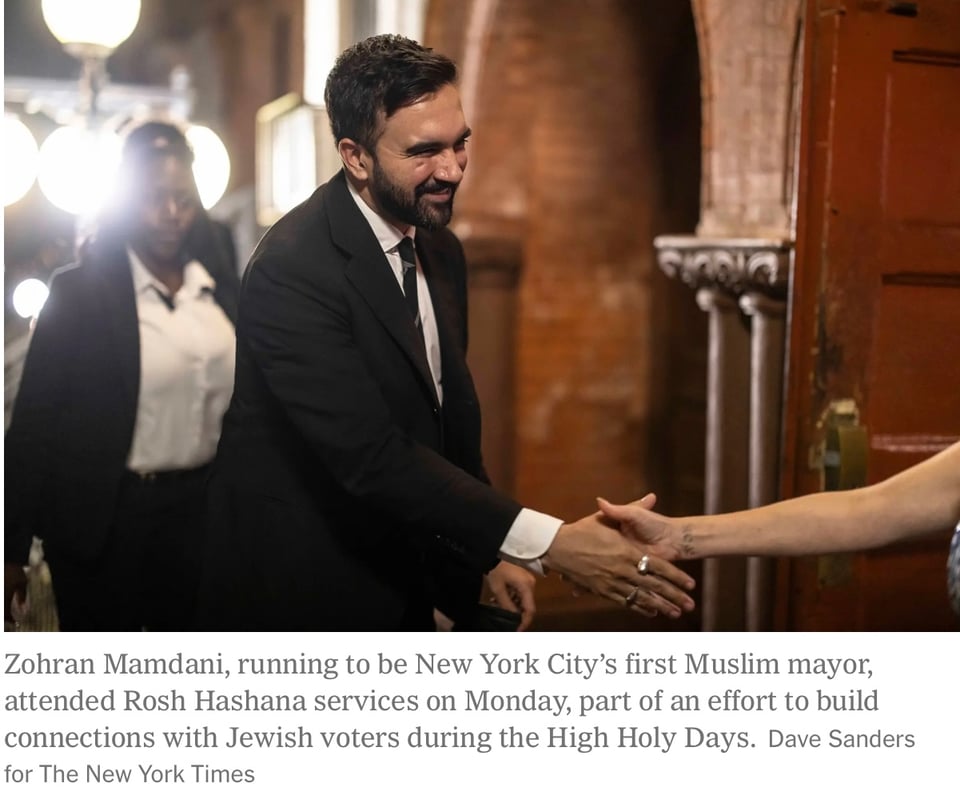
He wished Jewish New Yorkers a happy new year in Hebrew. He checked in with community leaders. And after the sun set on Monday night, Zohran Mamdani, the Democratic nominee for New York City mayor, walked into Rosh Hashana services for the first time.
For most New York politicians, the High Holy Days each autumn present an easy opportunity to show support for the city’s vibrant Jewish community. They share holiday greetings on social media, or perhaps show up at a temple or two.
But for Mr. Mamdani, the 10-day stretch will be something more complicated, a high-profile election-season test of his relationship with a group of New Yorkers that is split passionately for and against his candidacy.
It is no simple balancing act. Mr. Mamdani, a state assemblyman and democratic socialist, has no intention of backing off his strong criticism of Israel, which has unsettled some Jewish voters, especially older ones. Yet allies say he is trying to reinforce a message delivered on primary night that he would value and protect all New Yorkers as mayor.
Monday night’s services at one of Brooklyn’s most progressive synagogues, Kolot Chayeinu, offered the friendliest of preludes. Members of the congregation buzzed with excitement when Mr. Mamdani entered from a side door and sat in the front row next to Brad Lander, the comptroller and an ally. Neither man spoke during the service, in keeping with custom, but they were warmly welcomed.
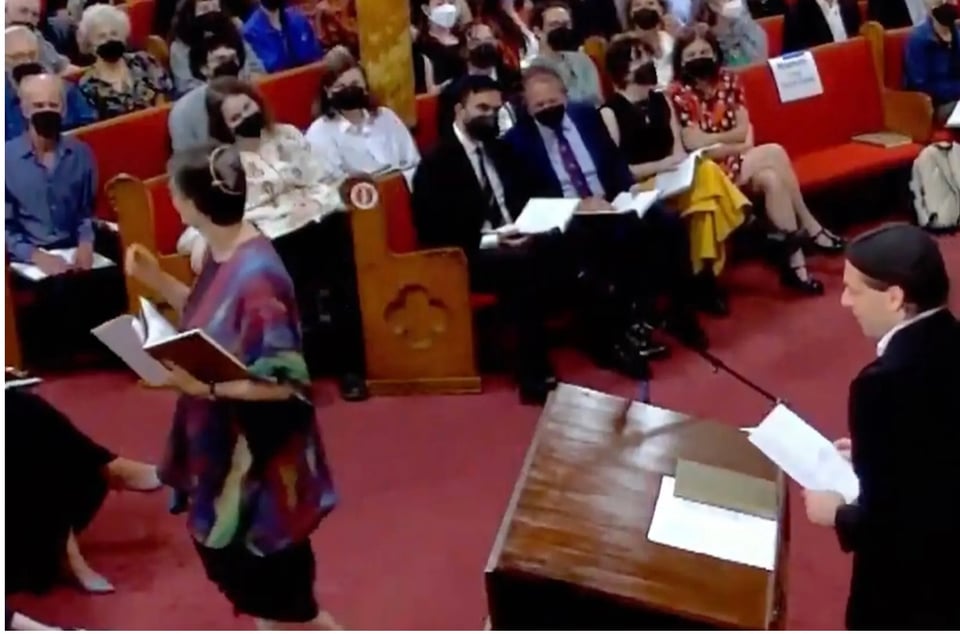
A livestream of the services showed Mr. Mamdani, center, sitting next to Brad Lander, the city comptroller, a close ally who is Jewish.Credit...Kolot Chayeinu, via YouTube.
In a minute-long video on Monday, Mr. Mamdani, 33, spoke of how Jews had endured “wave after wave of persecution.” He name-checked conservative Jewish communities in Williamsburg in Brooklyn and Riverdale in the Bronx, and suggested that the introspection of the Jewish holidays should inspire all New Yorkers.
“It is a tradition we could all do well to emulate: to build a city that feels sweet and learns from what did not work in the past, where we are not afraid to admit our failings and grow accordingly,” he said. “And where, above all, every New Yorker is safe and cherished by the city they love.”
“Shana Tova, New York,” he concluded.
In the coming days, Mr. Mamdani, who is Muslim, plans to do something he has seldom done on the campaign trail: show up at explicitly Jewish spaces where he is not universally liked and where rabbis typically fight to protect services as a place for prayer, not politics.
Next week, Mr. Mamdani intends to join Representative Jerrold Nadler for Yom Kippur services at a more mainstream congregation on the Upper West Side of Manhattan. Some congregants, the congressman said, “would be frankly very upset to see him there.”
Other plans were still taking shape, the Mamdani campaign said. But Jewish allies said his outreach was important, especially as his political opponents continue to portray Mr. Mamdani’s rise as a threat to Jewish New Yorkers.
“When it comes to identity politics, everything in New York City is always touchy,” said Ruth W. Messinger, an elder stateswoman in Manhattan’s Jewish circles who was the Democratic nominee for mayor in 1997. “It’s important for the Jewish community to see he recognizes this holiday and sees its significance.”
Mr. Nadler, who has endorsed Mr. Mamdani, was more blunt. “Obviously he ought to be trying to reassure the Jewish community,” he said. “The community is very divided, basically on age lines.”
Indeed, spread across five boroughs and a handful of denominations, New York’s Jewish community is the largest in the world outside Israel, and is far from monolithic.
While some high-profile rabbis and congregations have objected to his pro-Palestinian stances, polls suggest Mr. Mamdani is still winning a substantial portion of Jewish New York — though less than a majority.
Support is especially strong among younger Jews who are more likely than their parents and grandparents to agree with Mr. Mamdani’s criticism of Israel and its war in Gaza. A New York Times/Siena University poll recently found that more New Yorkers overall share his position on the conflict than the positions of his rivals, who have sided more clearly with Israel.
Kolot Chayeinu, a nondenominational synagogue known for its progressive activism, was carefully chosen as a first holiday stop. It is based in one of the city’s most affluent liberal neighborhoods, a stretch of brownstones near Prospect Park where Mr. Mamdani won nearly 50 percent of the vote in June’s Democratic primary, followed by Mr. Lander.
In October 2023, the congregation was among the very first to call for a cease-fire in Gaza, just weeks after Hamas’s Oct. 7 attack on Israel, the deadliest assault on Jews since the Holocaust. Since then, the congregation has drawn national attention as a hub for Jews organizing on behalf of Palestinians and against Israel as a Jewish state.
During Monday night’s service, which was held at Cornerstone Baptist Church in Bedford-Stuyvesant to accommodate a larger crowd, Rabbi Sam Kates-Goldman explicitly thanked Mr. Lander, who is Jewish, and Mr. Mamdani for modeling “interdependence” in politics.
In his sermon, the rabbi spoke extensively about the war in Gaza, calling Israel’s campaign there a genocide, a term Mr. Mamdani has also used.
Afterward, Mr. Mamdani, who wore a yarmulke (optional) and a face mask (required), was mobbed by congregants before he could leave. One called him “a mensch” for staying for the full service; another said his campaign had given them hope. No photography was allowed, as is customary, though the service was streamed live.
A woman handed him stickers she had made with a picture of bagels and lox and a message urging Jewish voters to support Mr. Mamdani: “Reject the smear campaign — join the schmear campaign.” A rabbi associated with the congregation gave Mr. Mamdani a challah.
Mr. Mamdani is not the only candidate trying to step into less familiar spaces to build support. After facing sharp criticism for neglecting the city’s Muslim population, former Gov. Andrew M. Cuomo, his top rival, recently paid a series of visits to mosques around the city. (On Friday, he was heckled during one such visit by protesters who appeared to support Mr. Mamdani.)
Mr. Cuomo, a staunch defender of Israel, is aggressively competing for the Jewish vote, too, and joined a service on Tuesday hosted by Park East Synagogue on the Upper East Side. Mayor Eric Adams, another Israel ally who is running on a third-party line, addressed a Sephardic Lebanese congregation.
But the stakes are different for Mr. Mamdani, and not solely because he is the front-runner to become the city’s next leader. He also has few ties to mainstream institutions in a Jewish community that has formed a key plank of every winning Democratic mayoral coalition for decades.
Where his predecessors like Mr. Adams or Bill de Blasio spent decades building relationships with a diverse array of Jewish New Yorkers, from the nonreligious to the ultra-Orthodox, Mr. Mamdani has been much more closely associated with other groups.
As a candidate, he has tried to draw a distinction between his views toward Israel and toward Jews in New York and abroad, arguing that being anti-Israel does not make him antisemitic.
Mr. Mamdani supports the boycott, divestment and sanctions movement, or B.D.S., to try to pressure Israel to grant Palestinians full rights. He has denounced the war in Gaza and does not believe Israel should be an explicitly Jewish state.
During the primary, Mr. Mamdani set off a political firestorm when he declined to condemn the phrase “globalize the intifada,” a common pro-Palestinian rallying cry. He has since said he understands that many Jews hear the phrase as a call to violence, and that he will discourage its use.
And in a recent interview with The New York Times, Mr. Mamdani renewed a promise to, if elected, arrest Prime Minister Benjamin Netanyahu of Israel on an international criminal warrant should he visit the city.
But he has also called for significantly increasing funding for hate-crime prevention programs in New York City. He recently recorded a video with the comedian Ilana Glazer, who is Jewish, to highlight how the safety of Jews and Muslims is “inextricably linked.”
The High Holy Days appearances come after Mr. Mamdani has spent months meeting privately with rabbis and Jewish political leaders. Mr. Mamdani had hoped to visit more synagogues sooner, but several people familiar with the discussions said some leaders had been hesitant to host him.
David G. Greenfield, a prominent Orthodox Jewish Democrat who has not backed Mr. Mamdani, urged the candidate to talk more about campaign issues over the holidays, and to stress to New Yorkers “that he is committed to their identity and safety.” (New York Times)
A call for resistance to ICE in NYC.
Why I was arrested again by Brad Lander
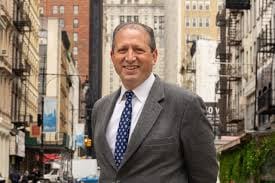
Mamdani sat with Brad Lander at shul last night. Brad Lander has served as the 45th New York City comptroller since 2022.
Last Thursday, I joined dozens of other New York elected officials, and more than sixty other New Yorkers, in civil disobedience at 26 Federal Plaza — where Donald Trump’s ICE continues to cruelly and lawlessly abduct, detain, and violate the rights of our neighbors
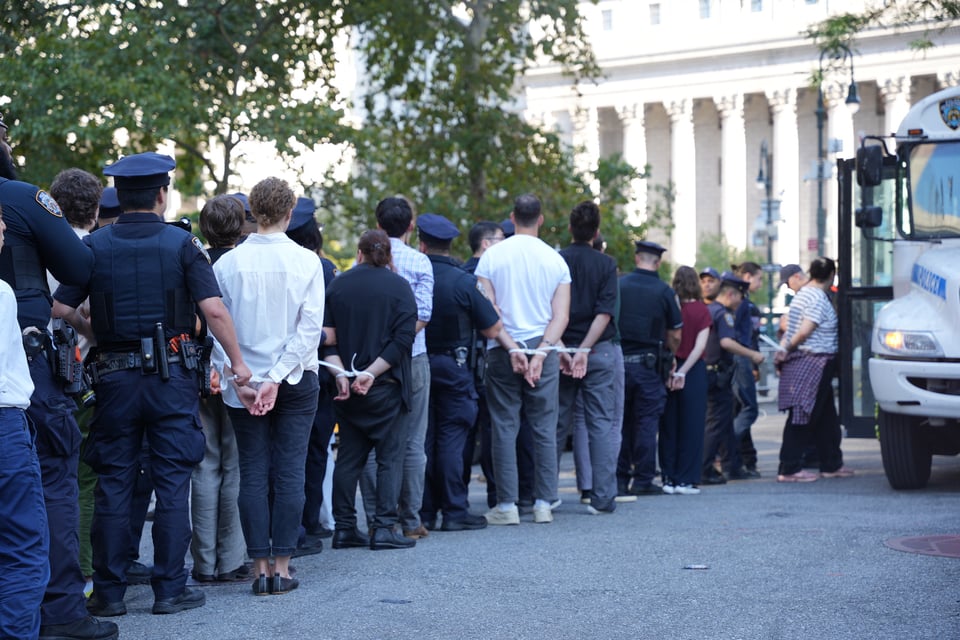
If you want to join the growing movement of New Yorkers standing up for the rights of immigrants, please join us in a mass mobilization on Thursday, June 25 at 6:00 PM in Foley Square. You don’t need to risk arrest – I’m not going to! But we can show that we understand what it means to be a New Yorker at this urgent moment.
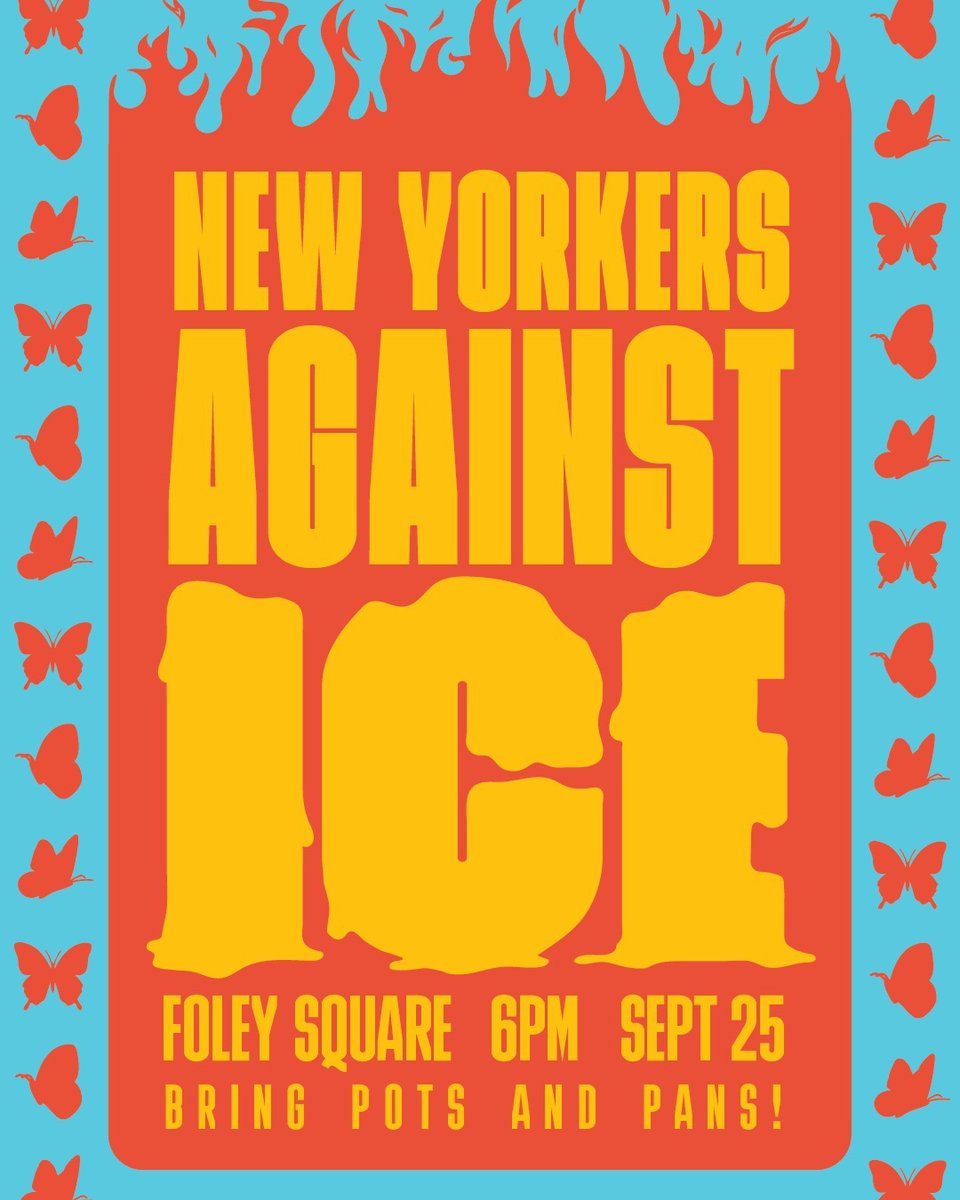
In a couple important ways, this arrest was different from when I was arrested back in June. In June, I wasn’t planning to engage in civil disobedience. Then, I was just looking to accompany asylum seekers out of the building when ICE agents arrested me for simply walking arm-in-arm with someone who had just finished his court case and had the right to leave the building.
On Thursday, I had also hoped to participate in peaceful witness-bearing. But this time, I was asking to see the conditions on the 10th floor of 26 Federal Plaza.
Last week, a federal judge ruled that ICE can no longer detain people in derelict, inhumane conditions at 26 Federal Plaza while NYCLU's case continues, confirming what we've known all along: the conditions of the de facto prison on the 10th floor are illegal. Despite peaceful requests to gain access to the 10th floor and bear witness, I was arrested by DHS officials before I could step foot inside.
One other important difference: when I was arrested in June, it was just me (and Edgardo). But on Thursday, there were many, many more people taking a risk alongside me. I am so grateful for the large group of New Yorkers who came together and used our collective voices to stand up for our immigrant neighbors—committed to meeting aggression and violence in the spirit of Dr. King and Ghandi’s peaceful resistance.
In addition to myself, State Senator Julia Salazar, State Senator Jabari Brisport, State Senator Gustavo Rivera, Assembly Member Robert Carroll, Assembly Member Emily Gallaghher, Assembly Member Jessica Gonzalez-Rojas, Assembly Member Marcela Mitaynes, Assembly Member Claire Valdez, Assembly Member Tony Simone, and Assembly Member Steven Raga were arrested by DHS officials inside 26 Federal Plaza.
And even more folks were arrested by NYPD during an additional peaceful civil disobedience outside the building, including Public Advocate Jumaane Williams, Assembly Member Phara Souffrant-Forrest, Council Member Sandy Nurse, Council Member Tiffany Caban — and more than 60 others including spiritual leaders, advocates, and everyday New Yorkers.
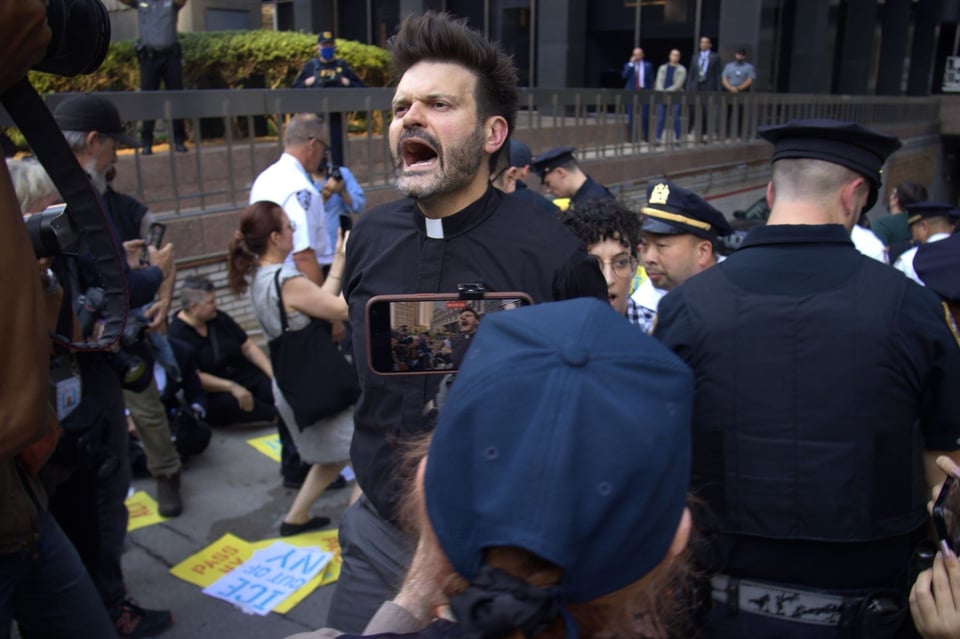
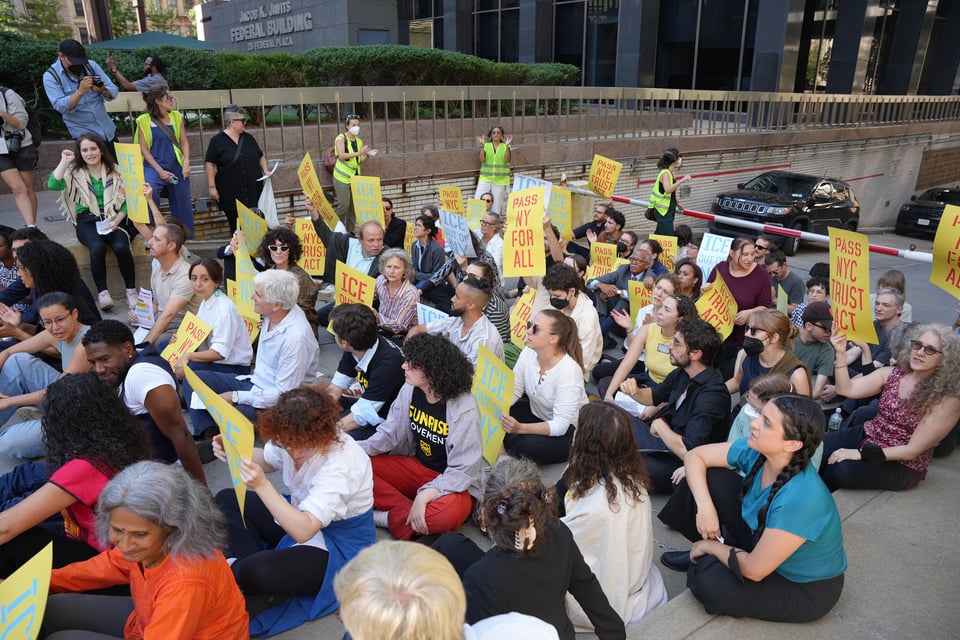
The broad coalition we are building together — practicing in the nonviolent civil disobedience tradition — is absolutely critical at this moment. Our movement in New York builds upon the mass actions taking place in Washington, D.C., Chicago, and many other cities where Americans are denouncing ICE and Donald Trump’s authoritarianism.
Over the past few months, I’ve been back at 26 Federal Plaza just about every week, over a dozen times, sitting in on court hearings, accompanying individuals to their check-ins, and pleading with ICE agents not to arrest fathers and mothers and brothers who are showing up for their hearings, who have not been accused of any crime.
You can read more about a few of those cases here. But there are many more. This week, I saw an Ecuadorian woman break down sobbing after she was unable to connect with attorneys. I saw an Egyptian man abducted. On a somewhat brighter note, I recently escorted a deliverista out of court, who has rights thanks to a law we passed in the City Council, and now has a more stable job.
If you’re reading this, right now is the time to get involved. You don’t have to risk arrest, but I believe New Yorkers have a responsibility to show up and make our voices heard. That is why I hope you’ll join me this Thursday, June 25 at 6:00 PM in Foley Square (again, I do not plan on getting arrested).
In the charge I led in the historic Judson Church before last Thursday’s action, I spoke about three traditions our movement inherits. First, there is a faith tradition. In Judaism, the commandment to welcome and to love strangers is rooted in the Torah, for we were all once strangers ourselves.
Then, there is New York City’s tradition as the greatest immigrant city in the world, with that copper-plated statue in the harbor reminding us what it means to be New Yorkers.
Third, there is the tradition of nonviolent, peaceful civil disobedience. It is a tradition that is fierce and insistent, courageous and demanding—that allows us to meet aggression and violence with a deeper commitment to humanity. In the days, weeks, and months ahead, it’s up to us to live up to our values as inheritors of these traditions. In these uncertain days, they make me feel a flicker of hope for our shared futures. (Substack).
Trump was in New York City yesterday.
One of the ways Trump was a fool and a complete embarrassment at the United Nations yesterday.
Trump to the UN: "I'm really good at this stuff. Your countries are going to hell." pic.twitter.com/Nkr4IEcVzd
— Aaron Rupar (@atrupar) September 23, 2025
This happened at the UN too.
All the UN members walked out during Netanyahu’s speech!
— Irlandarra (@aldamu_jo) September 23, 2025
Boycott genocidal Apartheid Israel pic.twitter.com/fK6y0C7LH8
Some media has begun to talk accurately (and negatively) about Trump.
At times, the New York Times is no longer groveling.
** How the Times reported on Trump’s rant at his memorial for Kirk.**
‘I Hate My Opponent’: Trump’s Remarks at Kirk Memorial Distill His Politics
President Trump has been fueled by grievance and animosity over the course of his political and public life.
Update on this issue from Heather Cox Richardson’s Letters from an American, September 22, 2025.
“But there seemed to be a new tone coming from media outlets covering the president today. The Associated Press posted on social media: “BREAKING: President Trump promotes unproven ties between Tylenol, vaccines and autism without new evidence.” The New York Times posted: “Unproven Medical Advice[:] In a rambling news briefing, president Trump promoted unproven ties between vaccines, autism and Tylenol use by pregnant women and babies.”
Fingers crossed . . . May the new truth prevail!
Ai may be wonderful but it will cost jobs. Guaranteed Income may provide an answer.
Guaranteed income is the ‘solution to poverty’ we need across America
Recent pilot programs for guaranteed income, or direct and recurring cash payments, are improving the daily lives of hard-working Americans across the nation.
Lucile O’Quinn in Saint Paul, Minn., used her $500 in monthly funds to pay for gas to get to a job an hour away and to pay people to watch her children before their daycare opened at 6 AM. Without the small amount of funding from that guaranteed income program, called the People’s Prosperity Pilot, she would have been stuck, unable to find a job in her town or travel to another one further away, unable to feed her kids, and unable to pay others to care for them while she works.
The city of Saint Paul launched the People’s Prosperity Pilot at the apex of the COVID-19 pandemic in 2020, offering $500 per month to 150 low-income families with newborn children. Thanks to recent data, we know just how successful it was.
Among the program’s participants, the number of people employed increased from 49 percent at the beginning of the pilot to 63 percent six months after the program ended. Seven percent of households were able to move to better-quality homes. Participating families maintained or improved their financial stability, allowing them to save money and smooth income volatility. Recipients reported decreased anxiety and depression, favorable levels of health, and increased feelings of hope. Other programs across the country have shown that guaranteed income programs deliver similar results in small towns and big cities alike.
Lucile’s story, along with countless others, inspires hope. Hope for a future where people can find better jobs, move into safer housing, and spend more time with their children. Hope for communities that need a little help — just a little help — to flourish and prosper. Hope for a country that recognizes poverty is bad for the soul and bad for the nation.
So why are some Republican lawmakers working to block and ban programs that deliver significant benefits to hard-working Americans, especially when guaranteed income programs are supported by voters on both sides of the aisle?
In a new poll, nearly two-thirds of American voters — Democrats, Republicans and independents — said that they support a guaranteed income. Voters surveyed supported programs that would directly give $500-$1,000 to individuals every month with no onerous requirements or strings attached. They understood the payments would be used by those who needed it to make necessary purchases and would empower people experiencing poverty to transform their lives.
These findings should be a political earthquake and mark the beginning of a policy transformation where leaders at every level of government work together to ensure every family across the country can thrive. But even with overwhelming bipartisan support from everyday Americans, there is a growing movement from Republican state lawmakers to thwart these anti-poverty measures.
In Harris County, Texas, the poverty rate is among the highest in the country, and Texas is in the top 10 poorest states. Harris County’s Uplift Harris guaranteed income pilot will provide targeted low-income households $500 every month for 18 months starting this spring and has received over 90,000 applications.
Despite the need and demand, some Republican state leaders are trying to block the effort with cynical legal maneuvers instead of working with local leaders to build a truly prosperous, thriving state where everyone can care for their family and build a better life.
Guaranteed income is a critical solution to the poverty that grips too many of our communities — especially Black and Brown communities. Dr. Martin Luther King Jr. called it “the solution to poverty” in 1967. Yet for decades — for generations — this policy had not received the attention or action it deserved, while failed policies and half-measures caused racial wealth gaps to widen, poverty rates to fester, and the economic mobility of Black families to languish.
Absent meaningful action, families struggled to get by without a way to get ahead and were left without options to break free from an entrenched cycle of poverty.
To begin to break this cycle, the nation’s first city-led guaranteed income program began in Stockton, Calif., in 2019. In the years since, the nationwide effort called Mayors for a Guaranteed Income has grown to 150 mayors, Counties for a Guaranteed Income has doubled in size after one year, and dozens of pilots delivering more than $250 million in guaranteed income to Americans nationwide have been introduced.
Guaranteed income programs are an investment in the power and potential of our people and the strength of our communities. They are an investment in what Dr. King called the bank of justice and a deposit in America’s great vaults of opportunity.
We’re not naïve. We know that establishing a nationwide guaranteed income will require extraordinary action and courage from public servants at a time when we have come to expect little of either. We’ve seen worthy and effective programs like this one shunted aside by politicians who view its ambitions as too great and its results as too disruptive. But we know that now is the time for action.
(The Hill. Michael Tubbs is the former mayor of Stockton, Calif., creating a first-of-its-kind guaranteed income pilot (SEED) in 2019. Currently he is serving as Special Advisor for Economic Mobility and Opportunity to California Gov. Gavin Newsom. Rodney Ellis represents Harris County, Texas, and has been a member of the Texas Senate since 2017. )
For once, we want Elon Musk to be right.
Elon Musk Says We'll All Have 'Best' Medical Care, Food, Housing and 'Everything Else' And A Universal 'High' Income When Robots Take Over By 2030
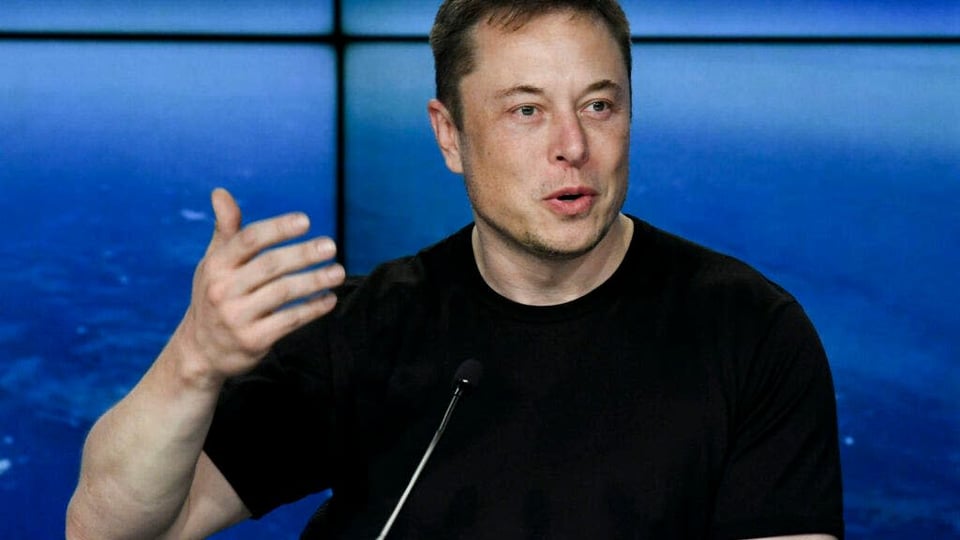
Elon Musk Says We'll All Have 'Best' Medical Care, Food, Housing and 'Everything Else' And A Universal 'High' Income When Robots Take Over By 2030.
What happens when robots take everyone's jobs? It's the question hanging over office chatter, think pieces, and late-night doomscrolling. People are scrambling to find "AI-proof" careers, but with predictions that automation could replace nearly every role, the anxiety feels justified.
Elon Musk, however, isn't losing sleep. He's been repeating for years that society won't just need a universal basic income — it will need something bigger: universal high income.
The latest reminder came after tech commentator David Scott Patterson claimed on X that by 2030, "all jobs will be replaced by AI and robots." Musk replied, "Your estimates are about right. However, intelligent robots in humanoid form will far exceed the population of humans, as every person will want their own personal R2-D2 and C-3PO. And then there will be many robots in industry for every human to provide products & services."
But the natural follow-up is uncomfortable: who pays for it? America is already buried under trillions in debt, and funding a system where "everyone has the best of everything" would mean rethinking the entire economic structure. Critics argue it's a fantasy without a tax base to support it, while others counter that automation itself could generate the wealth needed.
Skeptics point to today's struggles as a warning sign. If the government can't fully fund Social Security or Medicare, how realistic is it to expect a brand-new universal income — let alone a "high" one — to suddenly appear? As one response echoed, "If our government is cutting Social Security and Medicare, what makes you believe they'll advocate for universal income — whether high or otherwise?"
Others raise the political roadblocks. Universal programs require broad agreement, and even a modest UBI proposal has faced intense resistance. One reply put it bluntly: "It's going to be one hell of a fight to get universal basic income. The money would have to come from taxing super profitable companies. But who will be in favor of higher corporate taxes?" (finance.yahoo.com)
More on Jimmy Kimmel’s return.
Disney Restores Jimmy Kimmel’s Show to ABC After Controversy
In a fairly quick about-face, Walt Disney announced it would restore comedian Jimmy Kimmel’s late night show to ABC starting this evening after suspending it last week under pressure from the Trump administration and affiliate owners Sinclair and Nexstar over comments Kimmel made regarding Charlie Kirk.
Disney, announcing the come back on Monday, said it suspended the show to avoid further inflaming a tense situation but has decided to return the show after several days of discussion with Kimmel. But Sinclair and Nexstar, which together own dozens of ABC affiliates, could still decide to pre-empt the show.
Nexstar owns or operates around 30 local ABC stations, while Sinclair runs 38. For Disney, the decision shaped up after a meeting between Kimmel and top executives at the entertainment company, The Wall Street Journal reported, which added there’s no comment on whether Kimmel will publicly address the matter.
Disney faced pushback for suspending Kimmel after Federal Communications Commission Chair Brendan Carr threatened to step in if Disney-owned ABC didn’t take action. And President Trump suggested the administration could revoke broadcast licenses of television networks that are critical of him.
The FCC, Nexstar, and Sinclair didn’t reply to Barron’s requests for comment. Hundreds of actors and other celebrities are signatories of a letter sponsored by the American Civil Liberties Union calling Kimmel’s suspension a “dark moment” for freedom of speech.
What’s Next: Anna Gomez, the sole Democrat FCC commissioner, said in a statement that she was “glad to see” Disney find courage in the face of “clear government intimidation.” She said the FCC, which clears mergers of media companies, must combat efforts to stifle free expression.
(Anita Hamilton and Liz Moyer, Barron’s newsletter)
One more thing.
Sinclair, Nexstar won't broadcast Kimmel's show despite it returning to ABC.
Sinclair and Nexstar plan to continue pre-empting "Jimmy Kimmel Live!," despite the fact that ABC said it plans to bring back the program on Tuesday.
Why it matters: Sinclair is exploring a possible divestiture of its local broadcast stations, while Nexstar is acquiring Tegna. Both transactions require regulatory approval.
Driving the news: "Beginning Tuesday night, Sinclair will be preempting Jimmy Kimmel Live! across our ABC affiliate stations and replacing it with news programming," Sinclair said in a Monday evening statement.
"Discussions with ABC are ongoing as we evaluate the show's potential return."
Nexstar said Tuesday its affiliates would also continue pre-empting the show, saying it stands by that "decision pending assurance that all parties are committed to fostering an environment of respectful, constructive dialogue in the markets we serve."
It noted "Jimmy Kimmel Live!" remains available through Disney's streaming products.
The big picture: The broadcast groups pulled Kimmel's show from their affiliates amid vocal criticism of the late night host from Federal Communications Commission chair Brendan Carr.
Carr had warned ABC of potential repercussions for Kimmel's comments in the wake of conservative activist Charlie Kirk's killing.
He also applauded broadcasters that pre-empted the show.
What to watch: Kimmel's opening monologue. He has not yet publicly commented on the saga since his show was pulled. (Axios)
Did you see the Jimmy Kimmel show last night?
We did.
“Broadcasters Nexstar and Sinclair, which combined own and operate more than 60 ABC affiliates that reach 22% of U.S. households, said they still planned to replace Kimmel’s show with news programming.” (Wall Street Journal)
The W.N.B.A.’s Growing Fan-Base
Boys and men now love women’s basketball, too.
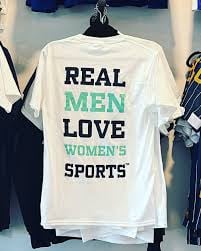
The W.N.B.A. is in the heat of the postseason, and arenas are packed with passionate fans. Many of them are women and girls, of course. But most of them are male. And among boys, that fandom is quickly growing.
I first noticed this not as a reporter, but as a mom. My 12-year-old son is obsessed with the Golden State Warriors. It seems as if half his wardrobe has Stephen Curry’s face on it. He wanted to paint his entire bedroom Warriors blue (I convinced him that one accent wall would be a more soothing choice).
When the W.N.B.A. introduced a new team in San Francisco this year — the Golden State Valkyries, which I recently profiled — I bought us tickets for the first game. I hoped he would become a casual fan.
Before long, though, he developed full-on Valkyries fever. Suddenly, he was sporting a violet cap and a Tiffany Hayes jersey, studying the roster and memorizing statistics. The real eye-opener for me came one Saturday morning when I saw that he was playing his NBA 2K video game not as the Warriors, but as the Valkyries.
It turns out my son is in very good company. Boys and young men are helping to fuel the surge in interest in women’s basketball.
This season, the W.N.B.A.’s fan base was 57 percent male and 43 percent female, according to statistics provided by the league. Men have actually made up more than half of viewership for years, but they were mostly middle-aged before. Now they’re skewing younger. The number of boys under 18 who watch W.N.B.A. games has grown by 130 percent over the past four years.
For today’s newsletter, I spoke with league officials, Valkyries executives and fans to understand the reasons behind the explosion in popularity.
Bigger stars
Seemingly every boy in America knows about Steph Curry and LeBron James. Now they know about Caitlin Clark, Angel Reese and Paige Bueckers, too. (I got these names from my son, who proclaimed them “generational talents.”)
Clark in particular has drawn new fans to the league. During her first year as a professional player last season, with the Indiana Fever, the W.N.B.A. saw a groundswell of interest in its televised games.
More than a dozen games topped one million viewers — a number the league had not reached in the previous 16 years. Clark’s debut also coincided with a 34 percent increase in boys watching the games, the league said.
Better play
It’s no coincidence that a crop of superstars has recently entered the league. Over the years, there have been more opportunities for young girls to play basketball, and that investment is paying off.
“The quality of the players has definitely gotten better,” said Joe Lacob, the billionaire who owns both the Valkyries and the Warriors. He said 55 percent of ticket holders at the women’s games in San Francisco were male.
The women are gritty and fierce, playing fast and sinking more 3-pointers than ever before.
Lacob sits courtside for most Valkyries games, and his guy friends are constantly asking him for tickets, he said. At one recent game, I spotted several heavily tattooed football players for the 49ers sitting beside him.
“People are not dumb,” Lacob said. “They see that it’s better. It just clicked.”
Cooler vibes
The Valkyries managed to become the first W.N.B.A. team to sell out all their home games, helping to propel the league to record attendance numbers. When you’re in their arena, the Chase Center, it feels like one big party.
Several male fans told me that Warriors games had started to feel like overpriced networking opportunities, while the Valkyries games were more affordable and more fun.
Nathaniel Berhanu, 10, has season tickets with his mom, Marina Cervantes, and persuaded her to buy him a Valkyries hat after a recent game.
“Anytime I’m here I’m overjoyed!” he said. “I’m hyped.”
It’s hard not to be when there are flames shooting up behind the backboards, D.J.s blasting music and entertainers like the rapper E-40 performing.
My son has started putting the full-court press on me for season tickets next year. Not for the men’s games — for the women’s. (New York Times)